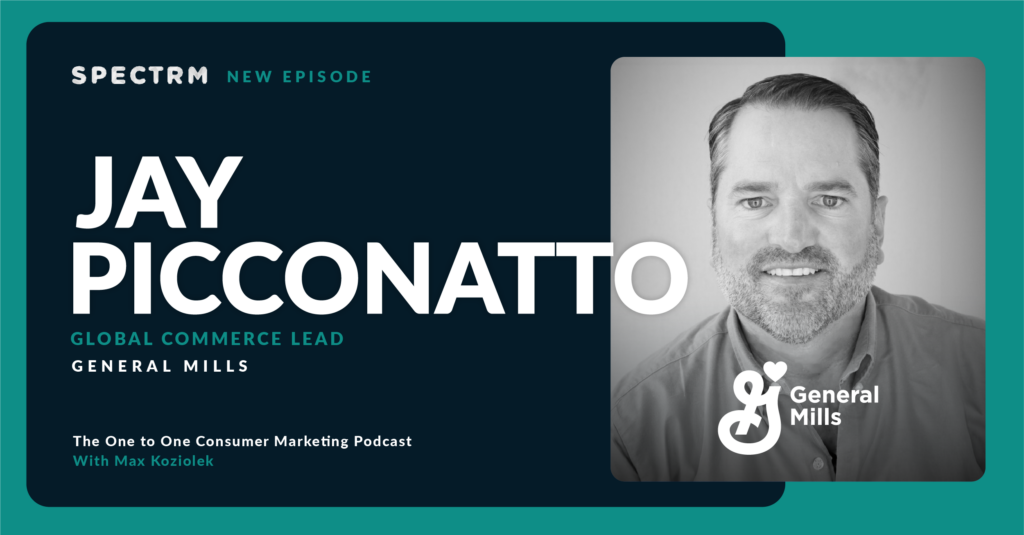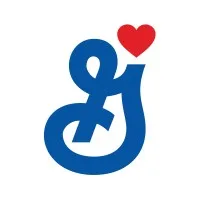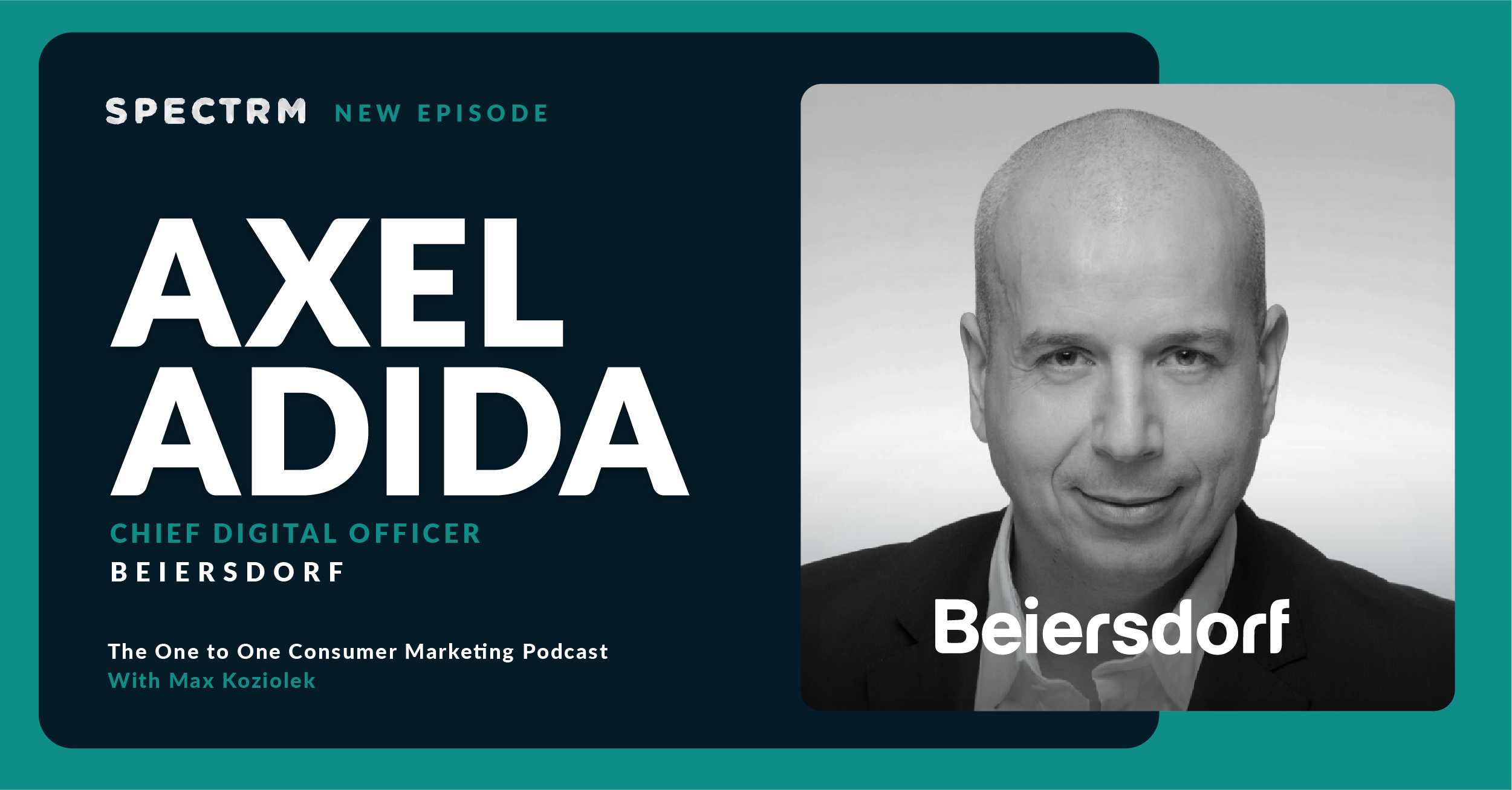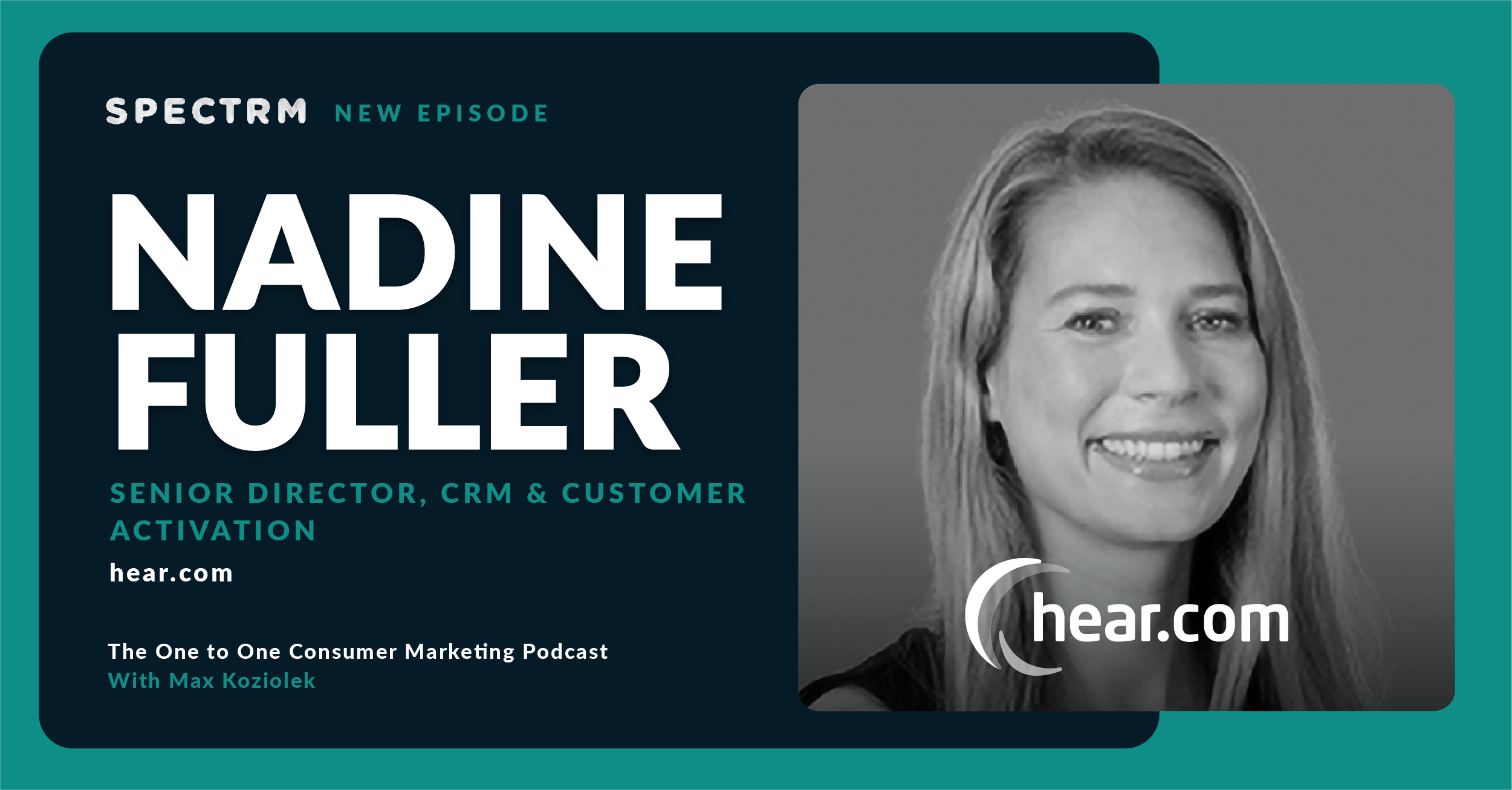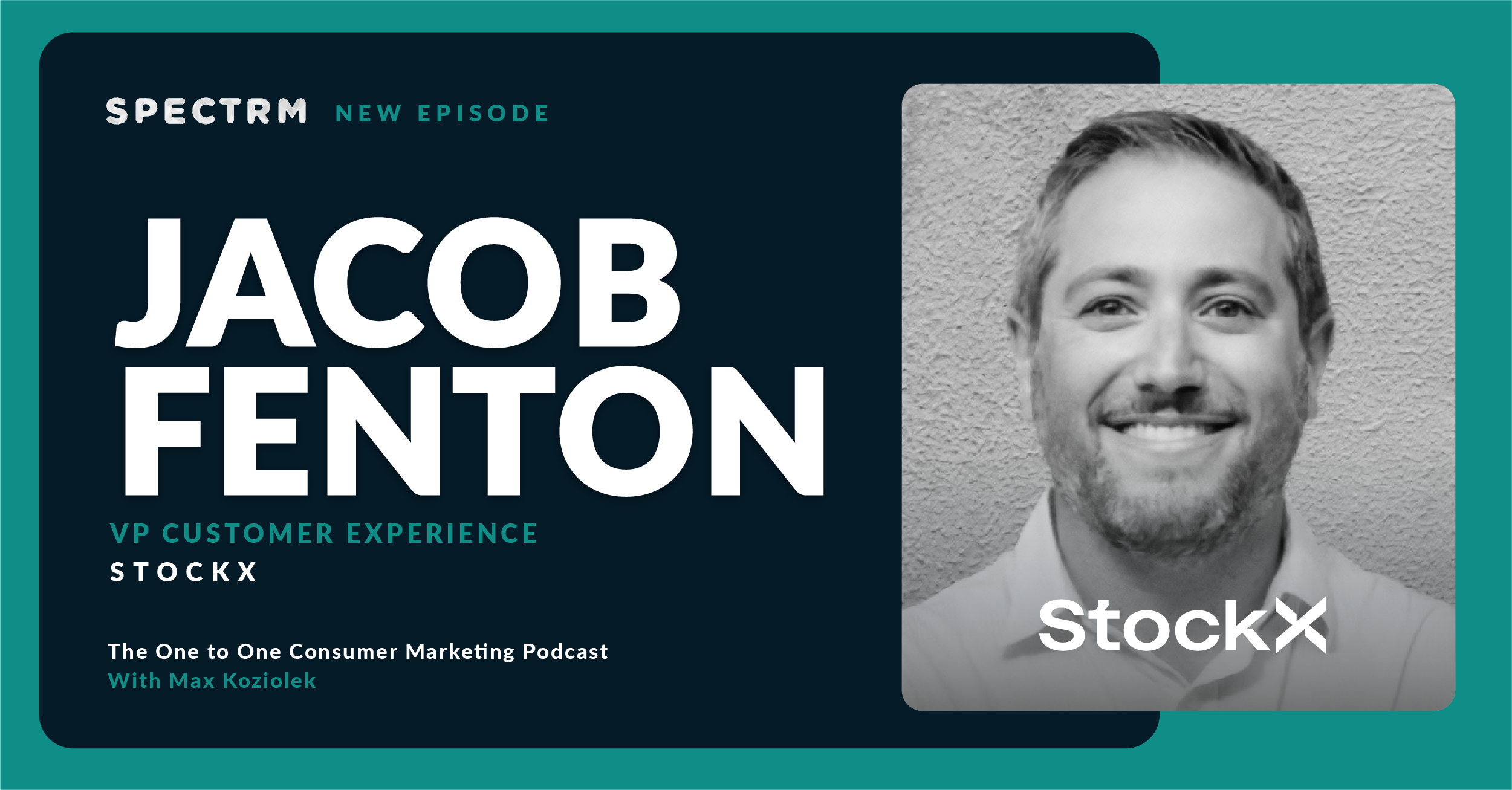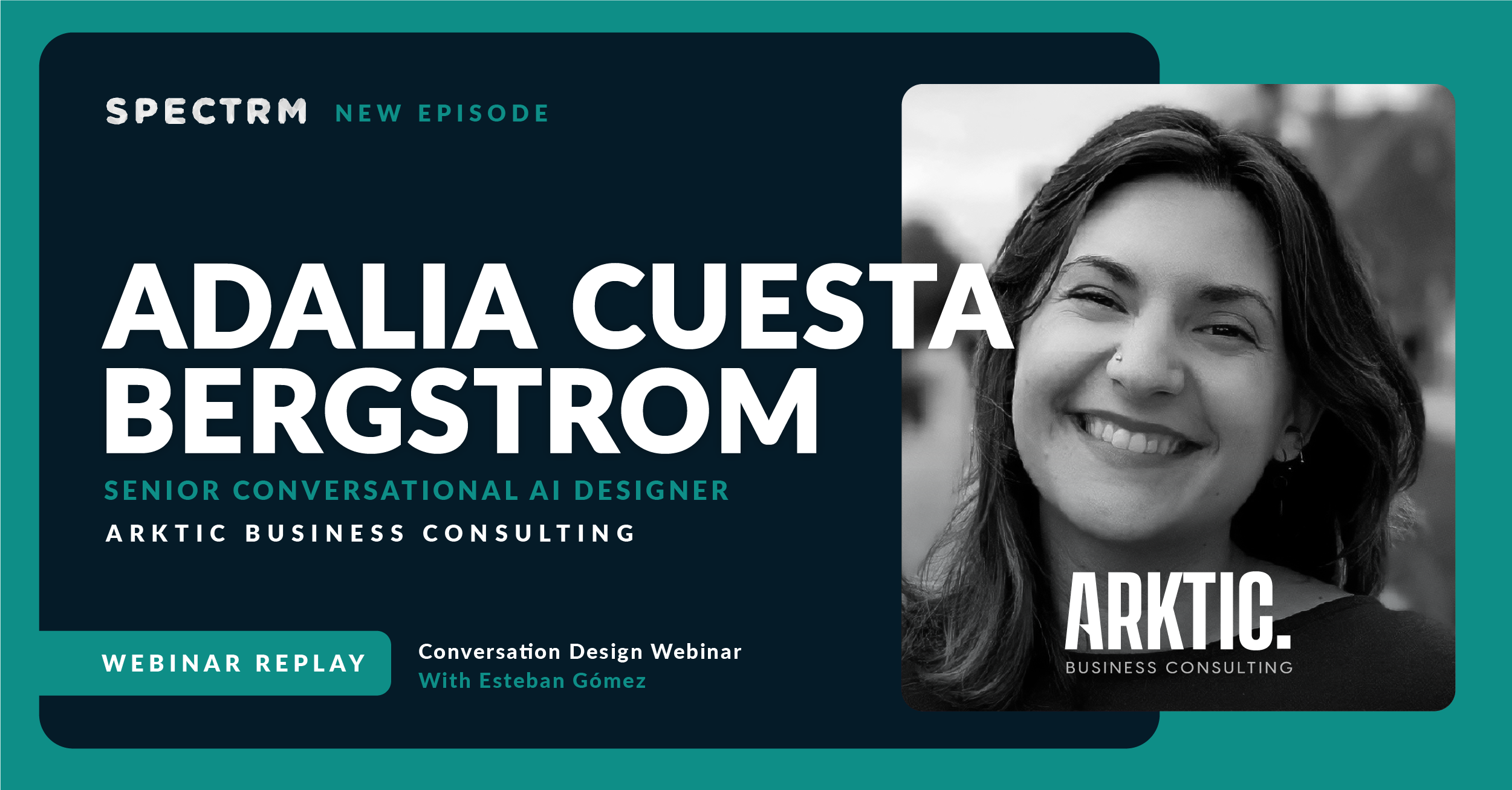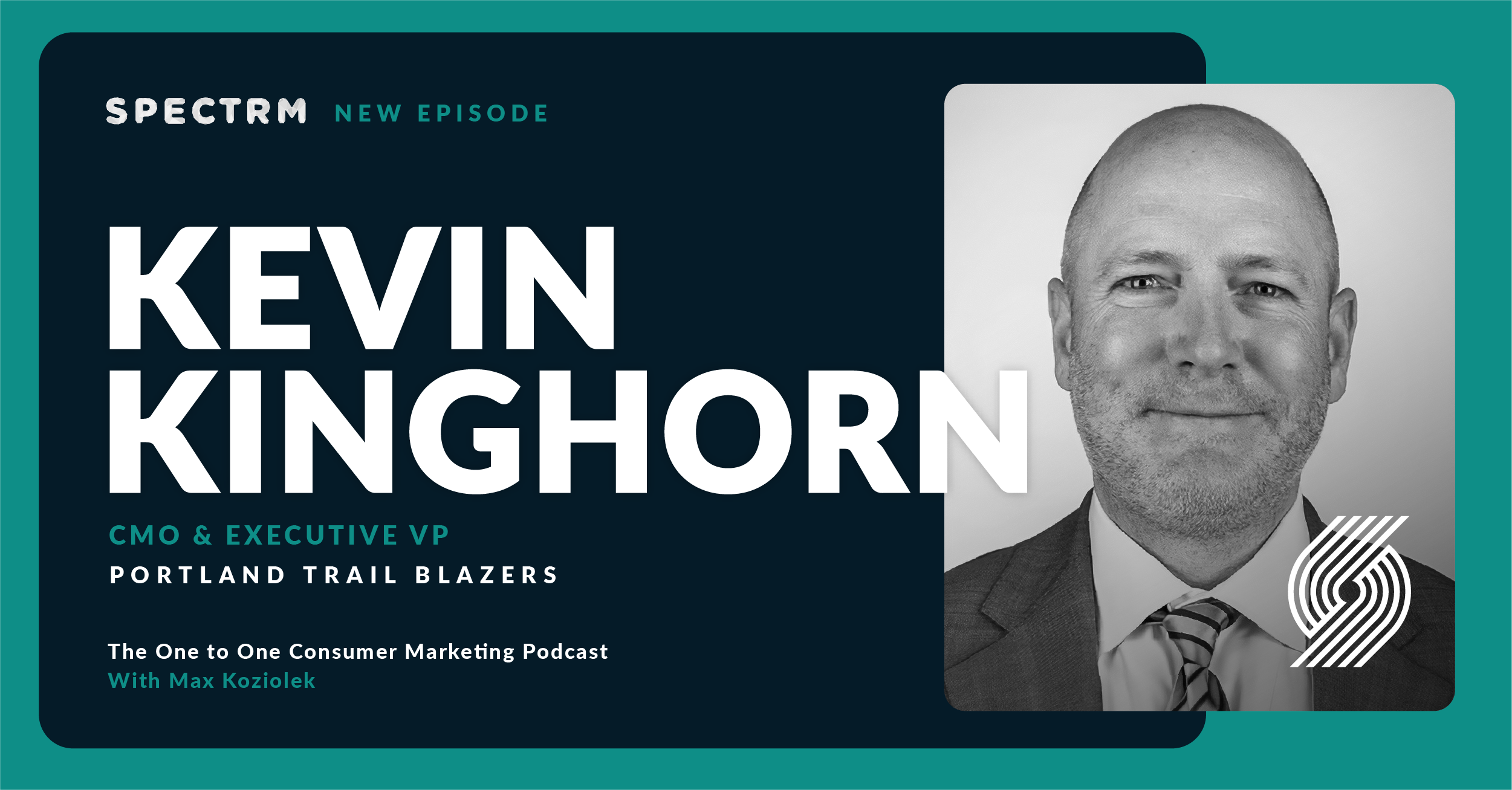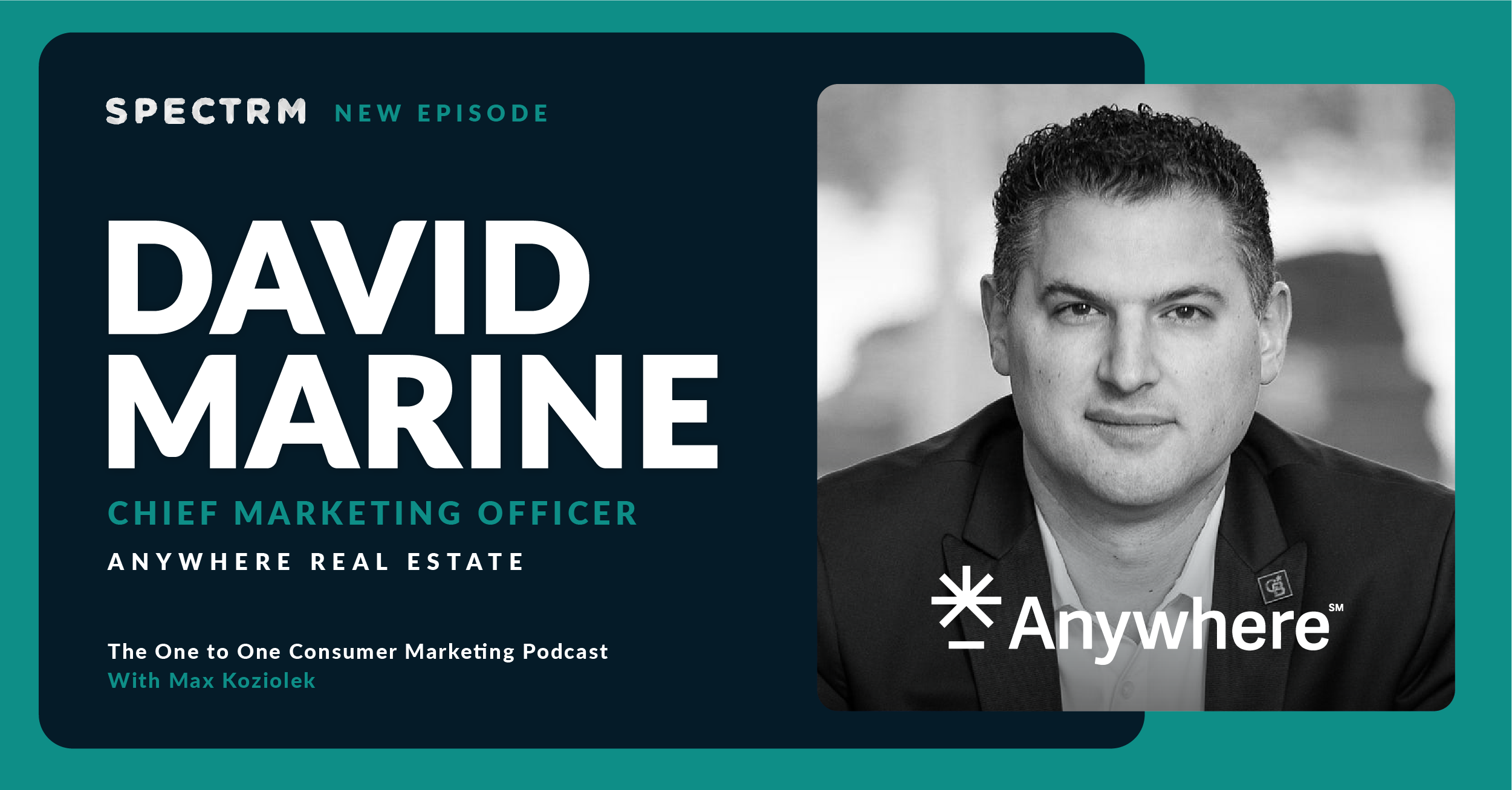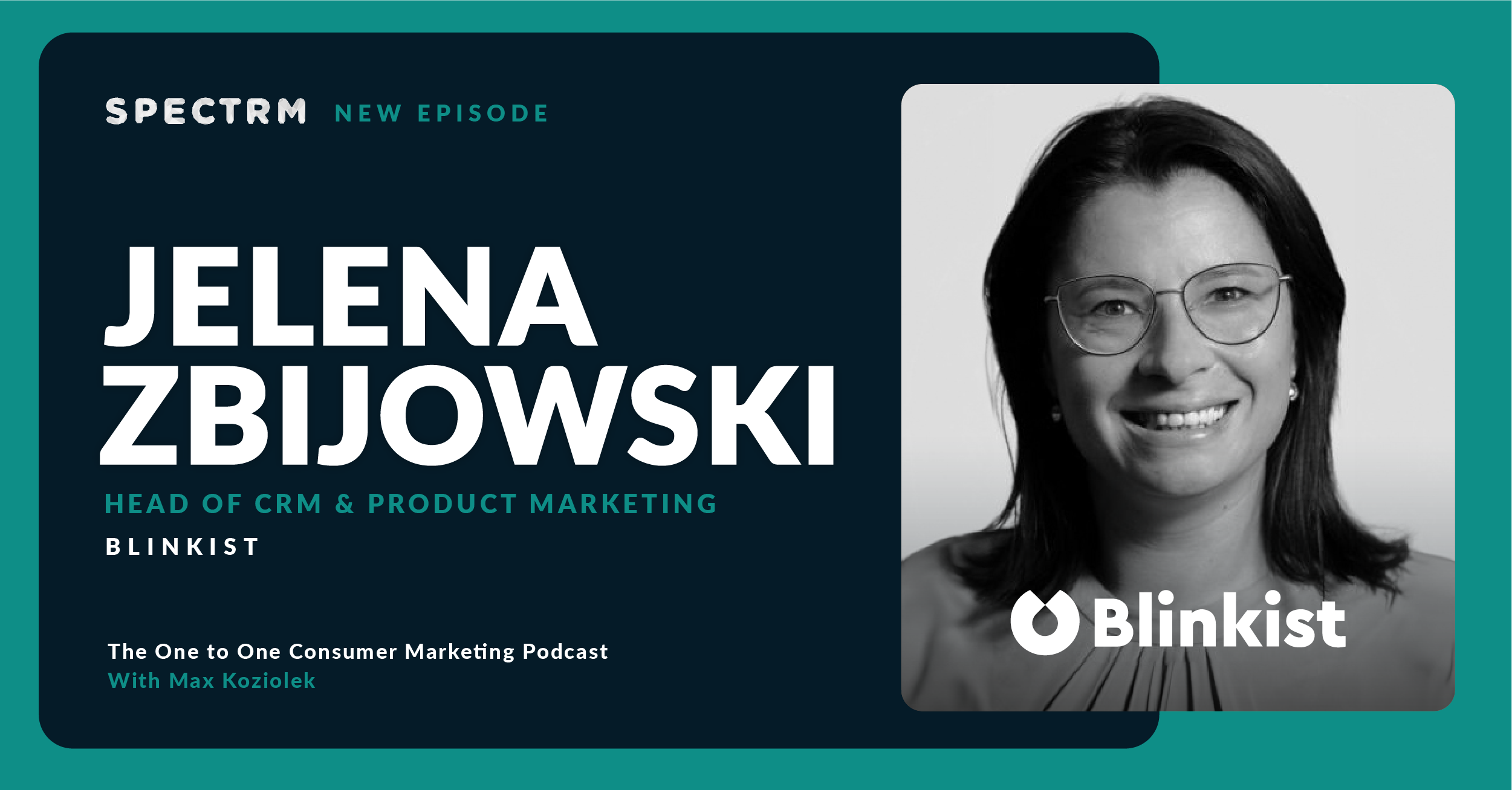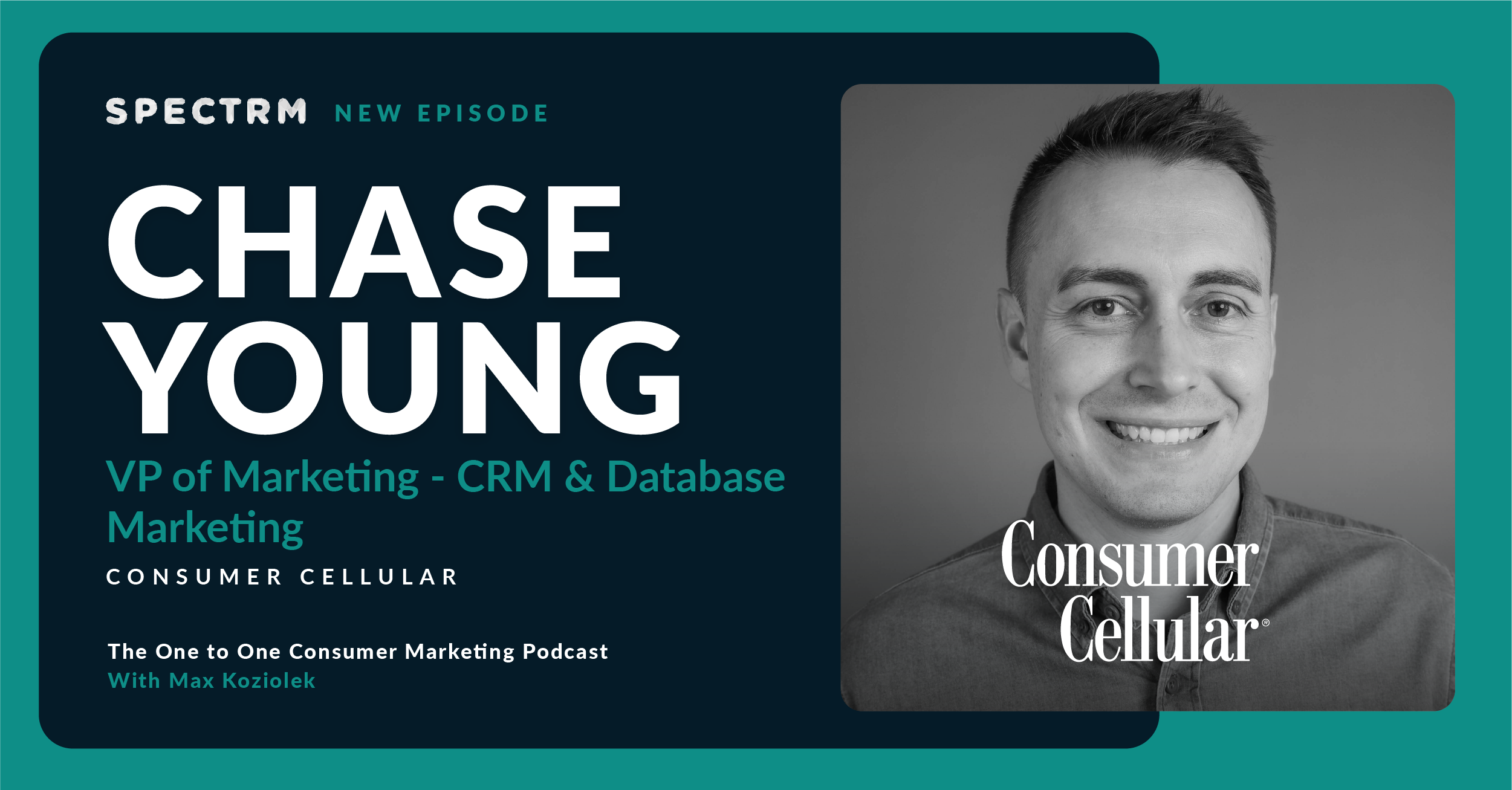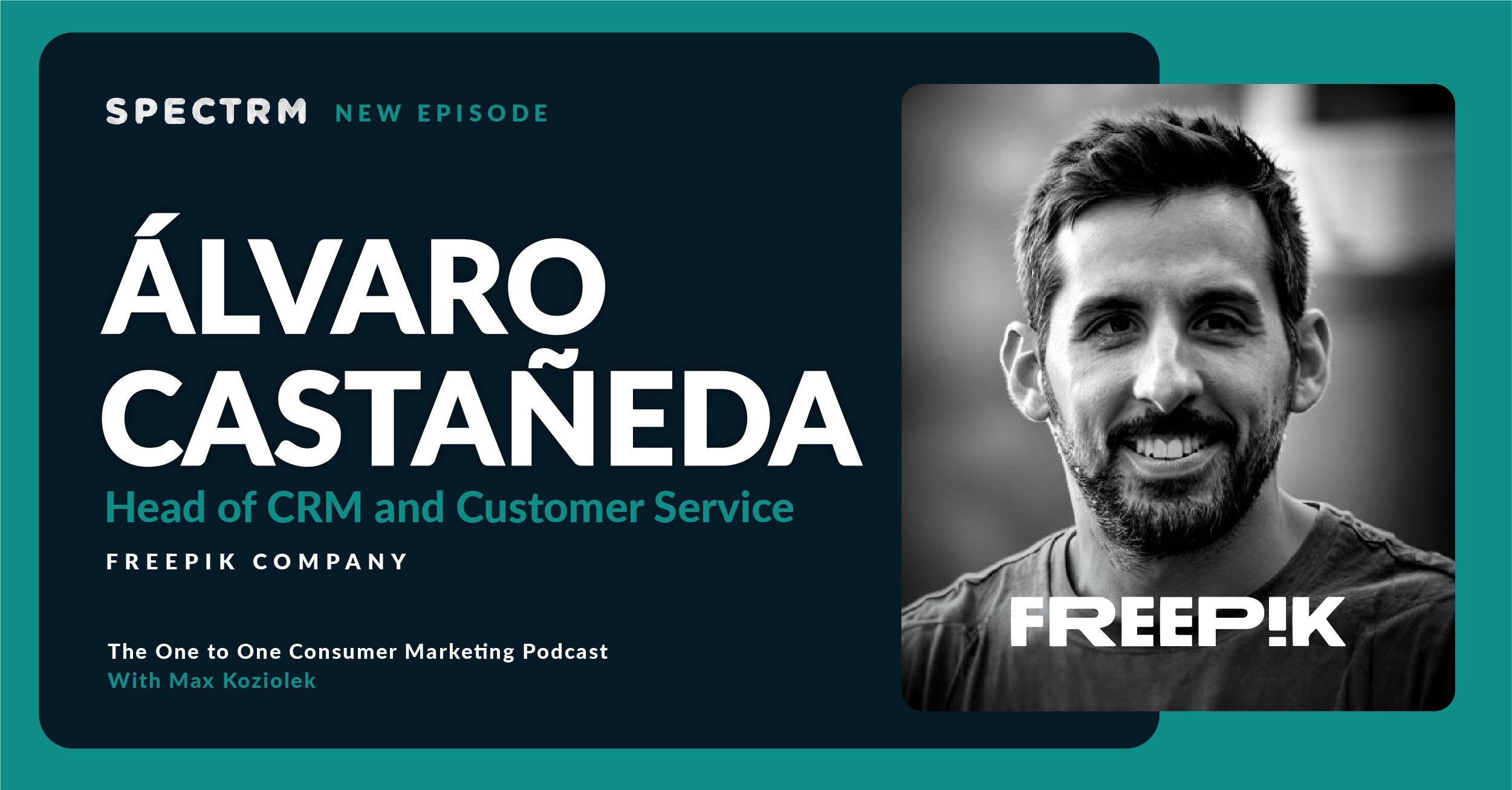Summary
Max speaks with Jay Picconatto, Global Commerce Lead at General Mills. They discuss the ways marketers can collect and use data to deliver better results to customers, and how data from various sources scales personalization efforts. They also talk about how GM is leveraging AI and automation in content creation, what channels and “disposable content” are working for them, and the technology shaping the future of marketing.
Topics discussed
- Four ways that marketers use data — target, personalize, gain insights, and measure — to deliver better results and experiences to their customers.
- How GM is leveraging AI and automation in their content creation process to deliver more personalization.
- Why marketers should focus on a “cocktail recipe” of first-, second-, and third-party data to better understand their customers.
- How Jay used SCANERS — search, content, availability, navigation, ratings, and subscriptions — to drive GM’s e-commerce business.
- What channels are working for GM, and how they’re focusing more on “disposable content.”
- The technology trends that will shape the future of marketing, including generative AI, clean room data collaborations, and VR.
It's been actually really interesting to see the transformation on how we actually get groceries into our home. That has changed pretty dramatically in the last 24 years. And certainly we've had new technologies in order to how do we market to consumers and different ways of kind of showing up in their lives. But nothing has changed more foundationally than the experience of putting groceries in your house. For my first 20 years of my career, it was very consistent. You got in your car, you drove to the grocery store, you brought your goods home. It's not really the case anymore.
Guest biography
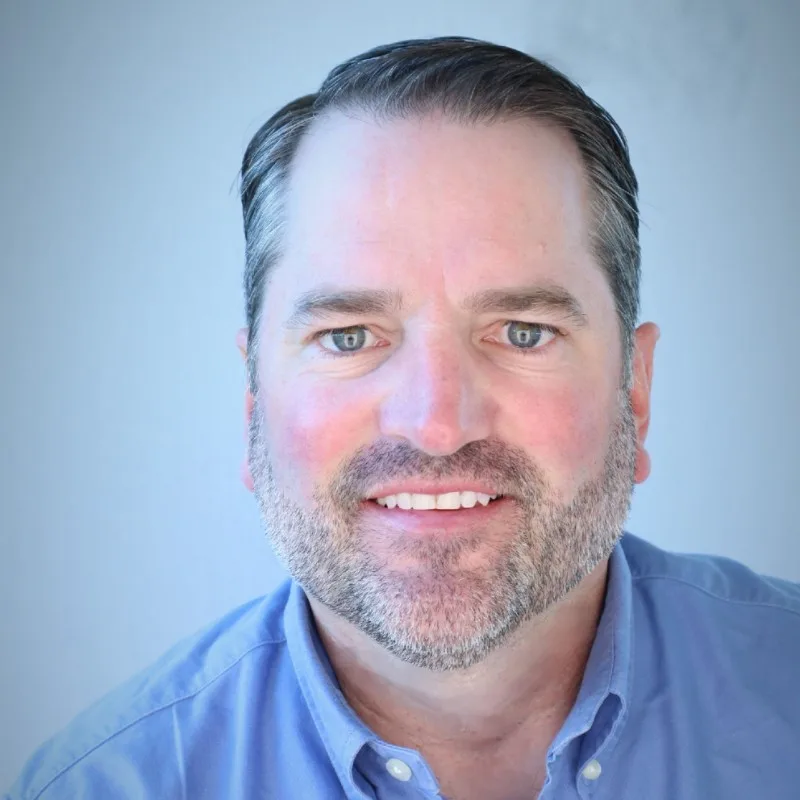
- He digitized a 25-year-old program to modernize the experience for consumers and drive data and competitive advantage for General Mills.
Company overview
From iconic brands, like Cheerios, Pillsbury and Häagen-Dazs, to brands you have yet to meet, General Mills has been serving up food the world loves for 155 years (and counting).
Industry: manufacturing | www.generalmills.com
Subscribe to the podcast newsletter
Transcript
00:00
Jay Picconatto
It’s been actually really interesting to see the transformation on how we actually get groceries into our home. That has changed pretty dramatically in the last 24 years. And certainly we have new technologies in order to how do we market consumers and different ways of kind of showing up in their lives. But nothing has changed more foundationally than the experience of putting groceries into your house. For my first 20 years of my career, it was very consistent. You got in your car, you drove in the grocery store, you brought your goods home. It’s not really the case anymore. You.
00:34
Max Koziolek
Hey, everyone, and thanks for listening to the one to one consumer marketing podcast today. I’m speaking with Jay Picconatto, global commerce lead at General Mills. Thanks for chatting with me today.
00:44
Jay Picconatto
Thank you.
00:44
Max Koziolek
You have been with General Mills for more than 20 years. Can you start by telling us a little bit more about this remarkable journey?
00:52
Jay Picconatto
I don’t know how remarkable it has been, Max, but actually I have been at Generals coming up on 24 years and it has really been the only place I’ve had a meaningful job in my career. It’s marked by just a lot of diversity. I started in the brand management function here and worked on a bunch of different brands through our different operating units in the US, but then bounced around to some other types of roles. I spent a little bit of time in our sales community. I spent some time in our e commerce teams and spent some time in our international business leading our Häagen-Dazs shops, marketing, which we have these kind of ice cream shops all around the globe.
01:27
Jay Picconatto
And so really got a chance to see a bunch of different functions of the organization and then kind of really hone experiences across a variety of markets, but also across a variety kind of leadership roles, both from running A-P-L but then also running and leading functions. And so it’s been a really nice, diverse career. I think one of the best things that I love about General Mills is it’s a place where you can have a diversity of experience and kind of find your path to where we’re at today.
01:51
Max Koziolek
That’s amazing. Almost 24 years. Right? So I was ten years old when you started there.
01:57
Jay Picconatto
That doesn’t make me feel any better, Max.
02:01
Max Koziolek
No, but of course the whole world changed. Everything changed. But what’s for you, the most significant change? What have you observed over time?
02:09
Jay Picconatto
Clearly how we go about buying and really acquiring our products. We’re a superbacked goods company. I’m selling boxes this year. We’re selling 2 to $3 items. It’s not like these are high price points, but it’s been actually really interesting to see the transformation on how we actually get groceries into our home. That has changed pretty dramatically in the last 24 years. And certainly we’ve had new technologies in order to how do we market consumers and different ways of kind of showing up in their lives. But nothing has changed more foundationally than the experience of putting groceries in your house. For my first 20 years of my career, it was very consistent. You got in your car, you drove to the grocery store, you brought your goods home. It’s not really the case anymore.
02:49
Jay Picconatto
And that is what we’ve seen really dramatically change over the last kind of four or five years.
02:53
Max Koziolek
Yeah, technology is the driver for that, but maybe let’s dive into that part. So how’s general world leveraging data analytics and now the latest AI and retention and their lifecycle marketing strategies?
03:10
Jay Picconatto
Yeah, well, when we start talking about how we leverage data, that topic gets super broad real fast.
03:15
Max Koziolek
Right.
03:15
Jay Picconatto
And so we’re talking about our performance data so we can better analyze and understand how our business is performing and then make trade offs that way. We have customer data, we also have employee data and how we’re just making sure that we’re bringing the right employee offerings to bear. But when I talk about data, and probably more relevant for the audience here, really talk about our marketing application of data. And so when we talk about that, we’re really trying to get after. How do we make sure we are showing up in the right way to consumers lives? And so when I think about marketing uses of data, we can start to go in a variety of ways. But there’s only four things marketers really do with data. We target differently.
03:53
Jay Picconatto
So we use data to try and find the right people in the right moments. We personalize with the data. So I understand you would like X, Y and Z. So I’m going to serve you more content of X, Y and Z. We try to get some insight out of it. So, hey, I know you buy these types of items. Maybe you tend to lean towards more epic foods.
04:10
Max Koziolek
Great.
04:10
Jay Picconatto
That’s an insight I can use to try to target differently and obviously provide content differently, and then we measure. So that’s really it. That’s what we’re using our data for. And so we’re focused mostly right now is on that first one. I started with audiences. How do I better use data to model who I should be targeting my marketing towards to deliver a better result? And I know we’ll get into a little bit of some of the one to one activity we may have, but for the most part, we’re talking about kind of one of many. I’m not really getting after one to one marketing. I’m getting after. How do I just group people in a way that I think they’re going to be more receptive to my messaging and more receptive to the offer and the products that I’m bringing forward.
04:47
Jay Picconatto
And so spending a lot of time right now on that audience build, we’ll move into personalization once we have those audiences. Now I have to create a bunch of different content for those audiences. Frankly, that muscles a whole lot of strengthening media to do to be able to have the ability to create that much content. I grew up in the days we talked about when I first heard here, grew up in the days if I had one brand champion, I’d make one wonderful PD ad for that brand champion, and I’d put that out into the world. And that’s kind of how I went to market. Now I have to have the nuance of 20 to 50 different audience segments that I’m really going to be targeting with messaging, and then I’m going to have to bring content to match that audience segment.
05:24
Jay Picconatto
And so now we’re talking about just ten times the amount of content I have to create. That’s a whole different skill set, that’s a whole different muscle for our organization to be able to create content on that scale. So that’s really where our focus is right now. Audiences, we’re going to quickly get into that content personalization. Yes, we try to use some stuff for insights to try to get smarter with data. Of course, it’s always been a sort of a standard practice. I don’t think we’ve gotten great on first party data to measure yet, but we will get there. But that’s really where our use has been focused against.
05:53
Max Koziolek
There are so many interesting points, too. I could dive in. But before we go, maybe for first quality data, you mentioned that you’re creating content for now 50 different audience compared to more or less one you had before. Do you see there a chance, especially with generative AI, to say, okay, I can just create a lot more content. I can not only go for 50 audiences in the near future, I can also go for 500.
06:20
Jay Picconatto
Yeah, very much so. Now, the two points of that question that I had, and I’d call out one, I don’t know how many audiences we need to get to actually have the scale. I don’t believe we need to go to one-to-one. So I don’t need 150 million audiences I don’t know what that number is. And so we have to kind of work towards that. You’re coming on generative AI, I 100% believe that we can start to use those new tools and technologies to really output creative in a different way. I would say we have still a fair amount of anxiety just for all of the right reasons, of privacy concerns and royalty concerns and all those things around gen AI content that shows up in the world.
06:56
Jay Picconatto
I think our earlier applications are going to be things that allow us more human queries of our own databases, our ability to search our data asset management system in a way to find things so we can reuse assets versus continually creating new assets. One of the things we sort of joke about, and I’m going to use the wrong number, I don’t really remember the number exactly, but we have something like 6000 pictures of oats in our data asset, like some absurd number of oats. Because while we’re a company and trios is based with oats and we use oats in a lot of marketing content. But the problem is we really can never find the old picture of oats, so we end up making a new, we take another one. Right. And so that’s how we get this sort of spiral.
07:40
Jay Picconatto
And I really think some of the tools and technology and I think Gen AI is a great example. This is going to help us get to much better reuser at data asset management because we’re going to be able to type in human language searches and be able to find assets that we really struggle to do today. Or even just the visual tagging is going to be able to pull up an asset without us having to actually have the metadata behind it in the first place. And so those are some of the places I think we will get to Gen AI first.
08:05
Jay Picconatto
I think over time we will be more and more comfortable and the standards will come up to bear that will make the industry more and more comfortable about stuff that gets created and populated into the world without a whole lot of human intervention. But I don’t think we’re there yet.
08:18
Max Koziolek
Yeah, I see. Also you could use the data office library also for training itself. Right. So that could be OGPT something around that. But I think you speak to a very important point that a lot of companies, the use case for generative AI, which would create the most value, is to make those kind of queries easier. And also all this kind of analytics thing, I just think about this all the time to say, hey, these are your benchmarks, this is the data. Give me a complete rundown on how I’m performing without me looking at five different dashboards in four different places completely.
08:57
Jay Picconatto
And that’s all internal facing to do better at our jobs. So it’s not going to come with some of the inherent risks that geni has in the world.
09:05
Max Koziolek
Yeah, that makes sense. The audience of this podcast is mostly retention marketers, lifecycle marketers, CRM marketers, and so on. Many of them regard first party data very highly. So I was listening to a different podcast with you, and you said rather than first party data being the end all, be all, you prefer to take a cocktail approach to data strategy. Can you tell me more about that?
09:30
Jay Picconatto
Yeah, well, first of all, I’m not immune from saying stupid stuff on podcasts, so both previously or on this one. But there’s also a comment that’s coming from us within our organization in trying to pivot our organization. So again, I find first party daily highly valuable. It is an integral part of our go to market strategy. And so I’m not trying to be dismissive of it when I make these comments, but I’m also trying to steer our teams to how I want them to be thinking about our application of first party data. And frankly, we had a plan where our teams were solely focused on acquisition and acquisition of, candidly, just new email addresses. And so that was a bad behavior that was not leading to the best experience for our consumers, and it was not leading to the best application of our data.
10:14
Jay Picconatto
It was leading to a practice of spending too much time, energy, money, resources against acquisition. And so part of my comment, and this was, is still, it’s a pivot. It shouldn’t all be about acquisition. First priority is extremely important. But I actually don’t believe General Mills’s competitive advantage is going to be the number of accounts we have in our CDP. I don’t think that’s going to be what we win on. I think there’s some companies that can just really scale up their number of instances, and that’s great. I don’t think that’s General Mills. I think General Mills is going to win on our ability to have the right pieces of data stitched together. So I know how to market most effectively to you, for example, Max.
10:57
Jay Picconatto
So not just having your email and 250 million other emails, but the fact that I know Max has a dog in his household. I know Max lives in this geo. I understand what you buy, how you buy, when you buy, and that these data stitched together is what’s going to actually make me the best marketer and our competitive advantage for General Mills is going to be our ability to target audiences based on the cocktail recipe of data that we’ve stitched together from first, second and third party sources. And I think if we can win on that recipe and that expertise in building essentially those cocktail recipes for our audience segments, that’s where we’re going to win. It’s going to help us to target differentially.
11:36
Jay Picconatto
It’s actually going to lead to better insights, and it’s going to lead us to the personalization at scale that we actually need to have, not lead us to a one to one marketing strategy that I don’t think we’re ever going to be able to scale far enough. So that’s really the push. It’s not at all to diminish the value of first party data. It’s actually to say, I need to enrich our data sets with other first party data and some second and third party data. I need to make sure that we have that entire enrichment plan more so than I want us to worry about. Just continued acquisition makes a ton of sense.
12:06
Max Koziolek
Yeah. Do you think the enrichment process will get more difficult down the line because data sources dry up? Because due to the privacy regulations and also the big platforms making moves towards that. Yeah.
12:21
Jay Picconatto
Harder. Yes. So I’m not going to have an ability to disagree with your comment there, but I think that we actually have a lot of data that we can enrich our data sets and we enrich our profiles with the data that we already have. I’ll use this example. We have a partnership with Fetch Rewards, and that gets us a lot of purchase based data. We also have a platform called Boxtops for education, where you essentially scan your receipt to earn money for your schools. And that also gets us a lot of purchase based data. So I understand what people are buying. I have a lot of enriched data on essentially their receipt. What’s interesting about that is, yes, I can now target lapsed users or current buyers or competitive conquests.
12:59
Jay Picconatto
You kind of think quickly about how you would use some of that data to then build some different audience segments. But I can also start to group things together and make determinations, make assumptions about your profile based on these groupings. So find, you buy a lot of jalapenos, you buy a lot of pepper, you buy a lot of spicy food. Okay. I can enrich your data. I can enrich your profile by saying you are a spicy food consumer. And what does that mean for products? I’m going to serve you. What does that mean for recipes? I’m going to put forward for you? What are those offerings I can bring together? And so I don’t know that we always need other data sources to continue to enrich our profiles.
13:36
Jay Picconatto
I think we have a fair amount of data inherent in what were already collecting in our first party data strategy to allow us to continue to round out and enrich these profiles and then let our models on our audience target continue to learn from what then works in terms of reaction in the marketplace. And then, frankly, that reaction is also going to be data that will continue to enrich our model. So if I start serving content and customized content to unique individuals or segments, and the reaction of that content, the performance of essentially that content, I’m going to be able to funnel that back into my model to continue enrich that model, and it continued to ruins that consumer profile. And so long winded story on this one. Yeah.
14:15
Jay Picconatto
Do I think it’s going to be harder because there’s a lot of third party cooks going away all this issue. Yeah, I hear you, but I think we actually have a fair amount of data. As long as we’re maintaining a fairly steady pipeline of our first party data, we can enrich it with the data that we have.
14:27
Max Koziolek
Yeah. You have also your own strategies for that, which I think is extremely valuable. And a lot of companies, and especially B2C companies are currently, I know, waking up and realized two things. The first one is we have a ton of data, so there’s no shortage of data. The problem is to stitch it together. I know that a lot of CDP integrations are currently going on at large D2C companies, as well as how do I find my own ways of generating and getting data right. So that’s really high quality data. I think that’s the other big strategy that everybody’s looking at. But I think you’re a little bit of a step ahead here by already having your own ways on how to do that. And I think with a charity approach, for example, that’s lovely.
15:10
Max Koziolek
I think that’s really combining two very good causes. That’s very cool. Back to you, I mean, you built an enterprise ecommerce team from the ground up and tripling the ecommerce business in three years and driving double digit basket increases. What kind of strategies were key for you to achieving this kind of growth?
15:28
Jay Picconatto
Yeah. First is man, take over an ecommerce business or the ecommerce business here right at the start of a pandemic. That’s kind of the secret weapon, right? Everybody’s at home and forced to order their groceries online. So I don’t want to assume that my role in this was over inflated versus just the market conditions. Ecommerce took off. I just happened to start leading that team at the start of it. But I would tell you, in terms of strategies, we really had to go back to a very clear focus on the basics. And it sounds not that sexy. It’s not as fun. But the reality is our organization didn’t really understand the basics of what drives online performance, ecommerce performance.
16:05
Jay Picconatto
And so really instituting a language and a core understanding of what the basics are for our marketing organization and then bringing the tools to allow us to actually evaluate performance against those basics. And I’ll get into a little bit more specific here in a second, but that focus on that core was kind of it. And so we established the important things you need to be thinking about as a marketer as it relates to the ecommerce growth is going to be our acronym is scanners. Pretty much all of our companies, all our CPGs have an acronym like this, but ours is scanners. And it’s essentially what we believe are the kind of the six drivers of your online performance, search, content, availability, navigation, ratings and reviews.
16:45
Jay Picconatto
And we added subscriptions really just because our pet team, we own Blue Buffalo, and our pet team really highly values subscriptions. We’re trying to bring some tools to monitor and understand our performance in that area. And so really saying, hey, organization, everybody learned this language. This is what you need to care about. Now I’m going to start over time bringing you tools to measure how well are you showing up on the digital shelf. In the world of search, both paid and organic, what is your content health online look like? What does your availability relative to in store look like? What is your rating of reviews performance? What is your percentage on a subscription? We never had any of these tools. We never had any of that diagnostic to be able to even understand how we are performing.
17:26
Jay Picconatto
And once we started to show teams, hey, you want your search score to improve? Your content score is terrible. Improve these things, make your digital shelf look better like this. Your search will go up and lo and behold, it does. And then all of a sudden, one search goes up, your sales go up. So it was really about driving that consistent language in an organization. I don’t care what acronym you do. I think PNGS is something like cars. They’re all the same words. We all care about the same stuff. And so figure out how you drive that through your organization and then just ruthlessly focus on those fundamentals and kind.
17:57
Max Koziolek
Of good things happen.
17:59
Jay Picconatto
When I took over the ecommerce business, we had the wrong imagery. On our digital shelf, we’d have a lucky charms box on a Cheerios PDP. We had all sorts of problems. So were really about building these systems and tools to be able to recognize where those issues were and then building the back end system to be able to make those changes effectively. So one of the other hallmarks of what we did over those couple of years, I joke about this a lot. We had all these content issues. I just gave you an example, like the lucky charms box on a Cheerios PDP. We had all sorts of content issues. And my boss was always up in my business going, hey, why don’t you just hire 25 year olds, put them in a room, and fix all of our content? We have about 2000 SKUs.
18:39
Jay Picconatto
There’s about ten to 15 things on a PDP you change. So you’re talking about 20,000 things we could go change, right? Sure, I could do that. But the problem is we’re going to want to customize those PDPs by our top five retailers, and then we’re going to want to change up the content on those PDPs every quarter, maybe based on performance or based on seasonality of the business or based on some promotion that’s going on with our businesses. So now you just took me from, yes, I can hire 25 year olds to go make 20,000 pieces of content, but 20,000 pieces of content customized by our top five retailers changed up four or five times a year, just became 250,000 pieces of content. And I can’t hire that. So what we need to do is we need to build the system and the automation.
19:22
Jay Picconatto
So once our brand teams, our marketers, create something, they send it to us, send it to, essentially the central team, and it seamlessly populates, it seamlessly publishes all the way through retail. We get this audit back on whether the right content is existing and what that content health score is, and we can come back to the brand teams with kind of analytics that are telling them this is working or this is right or this is not, versus every quarter. I’m asking to kind of have a manual entry of 25 year olds type in 20,000 pieces of content. And so that’s really where we focus our energy for the last few years.
19:57
Max Koziolek
That’s amazing. That’s an amazing story. And also give you a good sense of the skill you have with all different products at all the different top five retailers and so on, how that is multibank, that’s amazing. But it seems to me you have now quite a well oiled machine. How are you creating the different imagery? How are you doing that? Are you then also doing that? But especially for paid advertising, you can even scale that further up. Are you doing that as well? So then you’re also scaling your per ad set and then per creative you can go.
20:26
Jay Picconatto
You’re on exactly the goal, Max. I’d say our last couple of years have been focused once it’s in our product information system. So our PIM system automation full stop from there forward. So we’ve really been focused on the automation, let’s call it on the back half of the process you’re starting. And we’re now turning our attention to automation on the front half of the process. How do we do modular shoots so we can actually bring in dynamic creative tools that allow us to version very efficiently? How do we bring in these AI solutions that allow us to search our data asset management system so I don’t have to make another picture of a note and I can actually reuse the assets.
21:04
Jay Picconatto
We have all these things we haven’t really got to yet, but that actually applies much less to the digital shelf and way more to the paid world. And that’s where we’re really turning our attention now, is to bring automation into that front end of the system to remove redundancy, drive some efficiency, but also give us the ability to create content for those 50 audience segments versus one kind of piece of content that’s going to roll.
21:27
Max Koziolek
That makes a ton of sense. That’s exactly, you’re doing exactly what I thought. That shows also how structured you’re doing that when you look at your current marketing channels, what is really working and what still needs to be improved.
21:43
Jay Picconatto
I think this is no different than consumer behavior. Social is really working. Social video really works. I mean, TikTok is a thing on a lot of people’s phones. So that type of content, short form content, is working very hard for us. We’re also entering a fairly aggressive recessionary environment. And so marketing channels that are driving differential price value, we got to care about the total value proposition of the offerings in general. But differential price value incentive channels, partnerships in that regard are working hard for us as well. No surprise, linear tv continues to be a place we shift dollars away from and into digital assets and more kind of short form video or more kind of quick turn assets. And so we’re really working on getting the organization comfortable with this idea of more.
22:30
Jay Picconatto
We use the term disposable content and so again, when I started marketing and I was working on that tv ad, man, I would test that tv ad in animatic form three or four times. We were going to spend three, $400,000 on the production of that ad. We’re going to shoot that ad in California in a wonderful setting, and then we’re going to run it for a year. And if I’m lucky, I’m going to get another budget to make a new ad the following year. But I’d probably run this for a couple of years. Right? And so had to work. It had to be right. It had to have all that energy going against it. When I’m doing a TikTok video that’s going to live for a day, it’s way more disposable.
23:06
Jay Picconatto
And so really getting the organization comfortable with shoot it on your phone, I don’t care, it’s going to be fine. It just has to bring the tenets of the brand. It’s got to make sure that it still isn’t kind of misguiding on any sort of brand guides, but it’s more in this disposable world. So getting more and more comfortable with content that’s only going to live out there for a short period of time. And we don’t need to make sure it’s perfect, but we do need to make sure that it’s landing message and is kind of consistently bringing kind of the brand into the forefront is how we’re sort of evolving our creative thoughts, too.
23:34
Max Koziolek
Yeah, that’s very true. Also, I think I just realized that how much everybody was talking about linear tv cord cutting and cable, all those kind of things, how this is shifting to the Netflix and the Amazon Primes of the world, but that especially short form video like TikTok or reels is such an accelerator of that development. I was not thinking about this, but I just realized that’s probably an even faster acceleration.
24:00
Jay Picconatto
Very much. And then we’re talking about in the US, so then you start to get into things overseas. So China, livestream commerce is also really working for us. And so there’s very much different forms that exist outside the US. We’re a company, about 60% of our businesses in the US, so we’re going to focus on the US, but there are definitely some other channels that are working pretty hard for us elsewhere.
24:20
Max Koziolek
Do you see live also coming to the US? Or do you think that’s a China specific?
24:26
Jay Picconatto
Actually, I think over time, we’ve actually done a couple of tests in the US on some live stream commerce. We’re not in the same world of super apps yet that they are in Asia. And that kind of every experience is kind of living on Alibaba the way it does. We don’t have that yet in the US do I think it’s coming? I do. I think we tend to follow the trends that are going on in China, so it’s hard for me to bet against it, but I don’t think we’re quite there yet.
24:52
Max Koziolek
Yeah. Okay. What are the three things, trends or technologies you’re currently the most excited about?
24:59
Jay Picconatto
Well, we hit on it for a while. I am very excited about Gen I think, and I’m not going to be the one, that this is not news to anybody on your podcast, that I think this is going to be a framebreaking change in how we actually do our jobs, even from just the tools that are going to exist on our office desktop. Right. It’s going to be kind of amazing to be able to summarize my last week before I finish the just you kind of picture how this is going to be. The Microsoft Office suite is going to include all this stuff for us at some point. That’s going to be pretty cool. So I’m pretty excited about that technology. We’ve spent a lot of time talking about data.
25:31
Jay Picconatto
I’m actually very excited that this is technology per se, but the explosion of clean rooms and the ability for us to have a lot of clean rooms with our retail partners and really start to combine data to get after better audience building, I talked a lot at the beginning of this on our focuses are on audiences. And I think one of the things that we don’t have in our data set is super complementary is what exists in our retail partners data set. And so when we talk to e commerce, and this a little bit more, too, when we talk e commerce to General Mills, we still are going through a retail partner. So our e commerce business, I’m talking about digital sales on Walmart.com that are picked up at click and collect or delivered to your home.
26:09
Jay Picconatto
That’s what we consider our main e commerce business. We’re not a big direct consumer business. And so really starting to leverage that data in a clean room fashion that our partners have, our retail partners have is going to be really paramount to actually getting after what best in class audience building is going to be in the future.
26:26
Max Koziolek
Can you quickly explain what a clean room is for the people who explain.
26:30
Jay Picconatto
What I’m responsible for? I have a very poor technical background, but essentially it is a safe place where we can bring our data in, retailers can bring their data in. It’s all anonymized to get after then combining those data sets so we can target those combined data sets in a different way. And I’ll give you an example in a second. But that Walmart, in this case, if I’m using a partnership with Walmart, is not getting my data and I am not getting their data. We are able to combine it in the clean room space so we can then target consumers in a paid media environment. So I’m going to bring in people that have spent time on bettycrocker.com, and I know a bunch of different recipe content that these individuals have searched for printed.
27:12
Jay Picconatto
I understand kind of both demographic as well as geographic location of people searching and doing different behaviors. On bettycrocker.com, Walmart knows the purchasing of those same, right. Based on their data set. They know their baskets, they understand what they buy in food, but also what they’re buying in the rest of Walmart. We’re able to combine that and say, okay, who is most likely to want Pillsbury Crescent rolls based on what they’ve purchased in the past from Walmart and what their searching behavior is on betty.com. And so that allows us to kind of combine those data sets in order to target.
27:47
Max Koziolek
Very cool, very good. That probably can also be used for the whole big trend of retail media as well, right?
27:54
Jay Picconatto
And for the most part, what we do with our retail partners, we are actually, to your point, talking about paid media within a retail environment. So we are talking about retail media. There’s definitely other partnerships with other data sets that allow us to target in other paid channels, but most probably our retail partners we’re talking about in order to target in their network. Thank you. In the left field because I just saw this and it’s getting it for my voice for Christmas. But technology I’m really excited about. There’s this VR hockey training tool that the kids are getting for Christmas. So I know, not relevant to this group at all, but it’s really cool. So the kids put on the goggles, they’ll be in the shooting room, and they’ll be able to figure out how to better hockey players coming out of it.
28:35
Max Koziolek
Yeah. VR quest three. I think it’s coming for Christmas really hard. I think that’s an amazing rise. I’m also very excited about this. I don’t know how that helps in our job. Singapore generally is very close to our job.
28:49
Jay Picconatto
It had nothing to do with people. I’m sorry I wasted everyone’s time for the last two minutes, but it’s pretty damn cool. And yeah, it runs on. I think there’s a quest five out now, too, so who knows? We’re going to have to figure this out.
29:01
Max Koziolek
We also have to be excited about things that happen in our private life. I really like that because I think that’s where our technology excitement should start probably, and 100% for that. The last question from my side, and that is five years from now, what do you think will then be the biggest change? You described me a little bit. The biggest change in last 24 years at Generals for you was how are we getting food into our home? If you look five years forward, what do you think is then going to change?
29:33
Jay Picconatto
I wish I had a good joke here if nothing else, but I don’t know. I have one Max. I don’t know. But here’s what I guess I’ll answer that. It’s really not going to answer your question on what I think the biggest change will be in five years. I think what we are destined for is a lot of change between now and even then. We talked about the biggest change I’ve had in my 24 really has come in the last five and even how we market really come in the last five. I think we’re going to have an experience of 25 years of change in the next year and then 25 years more in the following year. And so what’s kind of conditioned me too, is a couple of points. I think I’d lead the group with one.
30:11
Jay Picconatto
I started my career thinking I had to be right. So I get asked questions. I have to know the answer. I used to do a lot of studying before our plans, meetings on our market share in the southeast one part of our portfolio, right? I needed to be right. When we did those ads, they needed to be right. They needed to work or I wasted two years and $2 million. We’ve spent a lot of our energy making sure we are being right. And I’ve had to change that in the last few years. I can’t be right anymore. I don’t know enough to be right. The space is moving too fast. What I need to be is I need to be learning and I need to be comfortable with saying three words that I was never comfortable with my first 20 years of my career.
30:49
Jay Picconatto
And those are idols know. I get asked a lot of questions now and I respond. I don’t know. Here’s what I think is changing and here’s what I’ll go investigate to get to a better answer. But the reality is I don’t know. And that’s why I kind of answered your question. I don’t know what it’s going to be like in five years. I don’t know what it’s going to be like in a year from now. Stuff has just been on kind of a pace that I’m not comfortable with, so I’ve gotten really comfortable being. My job is to learn and to be smart and figure stuff out. My job is not to know the answers because I don’t think anybody can really know the answers. And so that’s been one kind of mindset shift for me.
31:19
Jay Picconatto
The other one has been really focused on authenticity. And so I found when you’re comfortable saying I don’t know, and you’re figuring stuff out and you’re going to work in an agile way and then you bring authenticity to it and that’s authenticity as a person and as a leader. But it’s also authenticity for brands. I think authenticity wins. I think when brands are authentic to their voice and to what they stand for, they win. If you authentically stand for one side of a political issue or another side of a political issue, it’s fine. You’re going to be fine standing for what you are as long as it’s authentic as a brand. I think the same happens for our leaders. I can authentically tell a bunch of my senior leaders, I don’t have any goddamn idea, but I’m going to figure it out.
31:58
Jay Picconatto
And I’ve gotten enough trust over 25 years in my job here to go, hey, I believe him. He doesn’t know, okay? Because I know that he will figure it out and he will get us to a better answer in the next three months or the next week or the next year than we would have. If he’s not figuring it out and anybody that tells you they got the answer is probably wrong because they’re not going to know what’s going to change or the new thing that AI is going to do for us next week or whatever. It’s just too hard to keep up now. And it wasn’t the early days of my career, but now it is.
32:26
Jay Picconatto
So I think getting comfortable with learning versus knowing and getting comfortable with you just got to be authentic is where brands are going to win, is where leaders are going to win, I think is what’s going to get us in the next five years.
32:36
Max Koziolek
That’s a lot of very good advice. I think you put it into that one, so thank you for that. I think that’s what every leader should embrace in these times of quite dramatic change, as you described it’s going to be very fundamental frame breaking, but also, I think, very exciting. There’s a lot of career opportunity for a lot of people who are able to embrace these new technologies. And going for that, we will see, I think, very impressive stunts here.
33:04
Jay Picconatto
Well, the last piece of advice is get your kids to go into data science. They’re looking to study something that’s going to be around for a little bit. So I think that’s last nickel’s worth of free advice.
33:18
Max Koziolek
Yeah, that’s good. But thank you, Jay. I mean, that’s what’s all we’re going to have time for the camera. But before we wrap up, if people want to follow your journey, where should they go?
33:31
Jay Picconatto
Well, I’m actually a little scared to say what will happen if you type my name into Google. You probably find me on LinkedIn. That’s probably about the best and only place you’ll be able to catch me, unless you’re in the Minneapolis area and want to swing by the building. But.
33:45
Max Koziolek
Okay, let me put in the LinkedIn. That will mean then. Thank you again. We looking forward to see how you execute on the next decade and longer and where you can bring journal mills know all the different in the e commerce world and beyond that. Really exciting. Thank you for taking the time.
34:04
Jay Picconatto
I really appreciate it.
